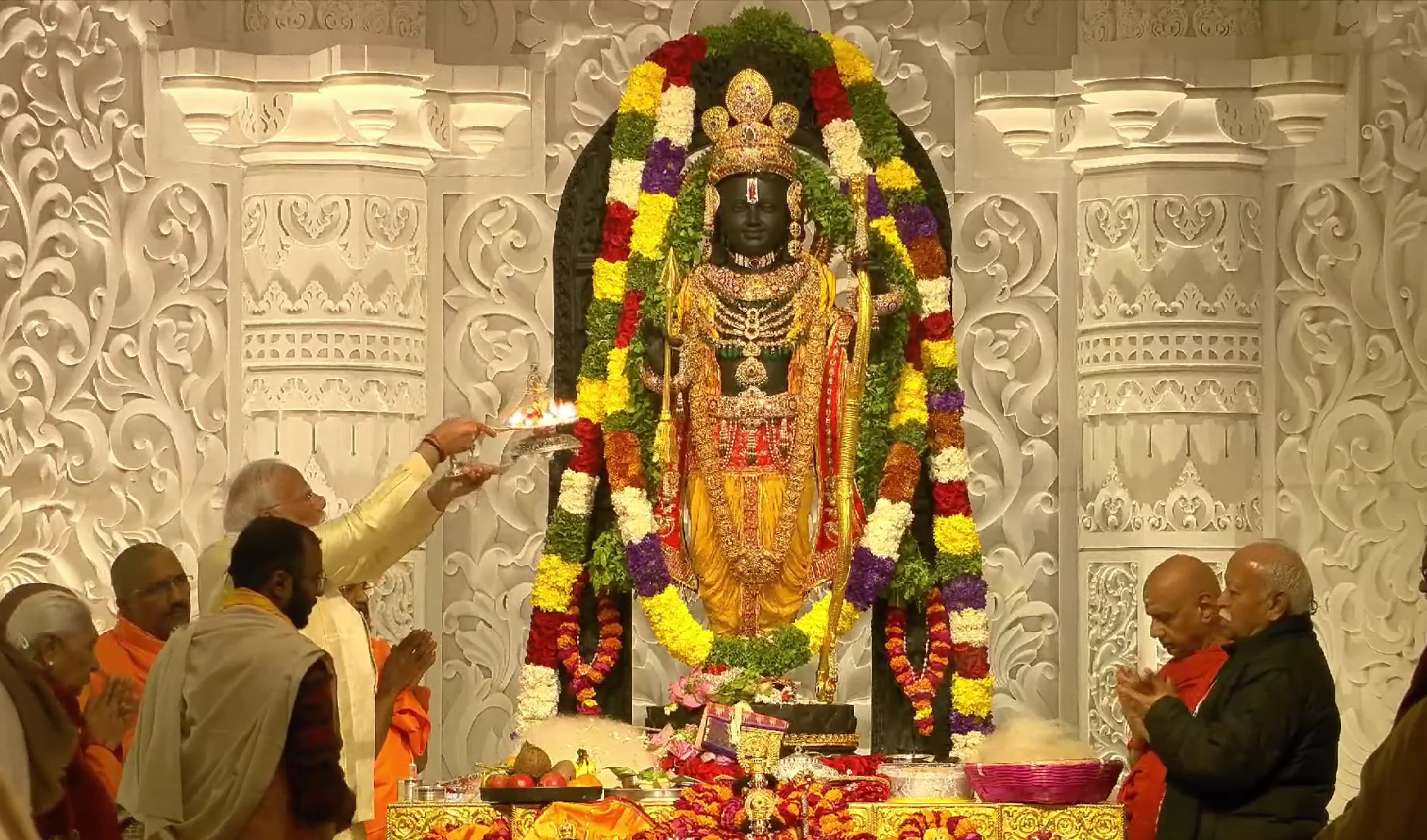Indian Prime Minister Narendra Modi inaugurated a Shree Ram temple in Ayodhya, built on the site of a historic mosque. This move fulfills a significant Hindu nationalist promise, with Modi’s party aiming for a third consecutive term in upcoming elections by appealing to millions of Hindus who have long sought the construction of the temple dedicated to Lord Ram.
The ongoing construction of the temple symbolizes a demand rooted in the worship of the revered Hindu deity. Modi’s party, along with other Hindu nationalist groups, frames the temple as a crucial element in their vision of reclaiming Hindu pride, which they believe was overshadowed by Mughal rule and British colonialism.
Modi, adorned in a traditional kurta tunic, led the opening ceremony while Hindu priests chanted hymns in the temple’s inner sanctum. The ceremony featured the installation of a 1.3-meter stone sculpture of Lord Ram. A conch was blown, symbolizing the temple’s opening, and Modi placed a lotus flower before the idol, adorned with intricate gold ornaments and holding a golden bow and arrow. He later prostrated before the deity.
The televised ceremony attracted millions of viewers, with news channels presenting it as a religious spectacle. Headlines such as “Ram Rajya begins” emphasized the event’s significance, using the Sanskrit phrase to convey the idea of just and ethical governance in Hinduism, although Hindu nationalists have employed it to signify Hindu dominance in officially secular India.
Approximately 7,500 people, including industrialists, politicians, and celebrities, witnessed the ritual on a giant screen outside the temple, where a military helicopter showered flower petals.
Critics view the ceremony as the commencement of Modi’s election campaign, highlighting his unapologetic fusion of religion and politics. Modi’s temple visits leading up to the event set the tone for this unprecedented approach, solidifying his role as a prominent Hindu nationalist leader.
Situated at a historically contested religious site, the temple’s inauguration is anticipated to boost Modi’s chances of securing a third successive term by tapping into the religious sentiments of India’s Hindu majority. Ayodhya, transformed ahead of the temple’s inauguration, reflects the elaborate preparations, with widened pilgrimage routes, a new airport, and increased tourism infrastructure.
The temple’s opening drew jubilant devotees from across the country, celebrating with religious songs and dancing in flower-adorned streets. Security measures, including the deployment of thousands of personnel and cameras, were implemented to manage the event.
The temple, built at an estimated cost of $217 million, spans nearly 3 hectares and is erected on the remains of the 16th-century Babri Mosque, demolished in 1992 . The site’s history, marked by communal tensions, culminated in a 2019 Supreme Court decision granting the land to Hindus while providing Muslims with an alternative plot.
The three-story temple, made of pink sandstone, is expected to open to the public after the ceremony, drawing an anticipated daily influx of 100,000 devotees. The event has become a nationwide spectacle, with live screenings, public holidays, and widespread celebrations orchestrated by the Indian government. However, not everyone is celebrating, as some Hindu religious authorities inclusing the four Sankharacharyas’ and opposition leaders boycott the event, accusing Modi of exploiting the temple for political gain.



